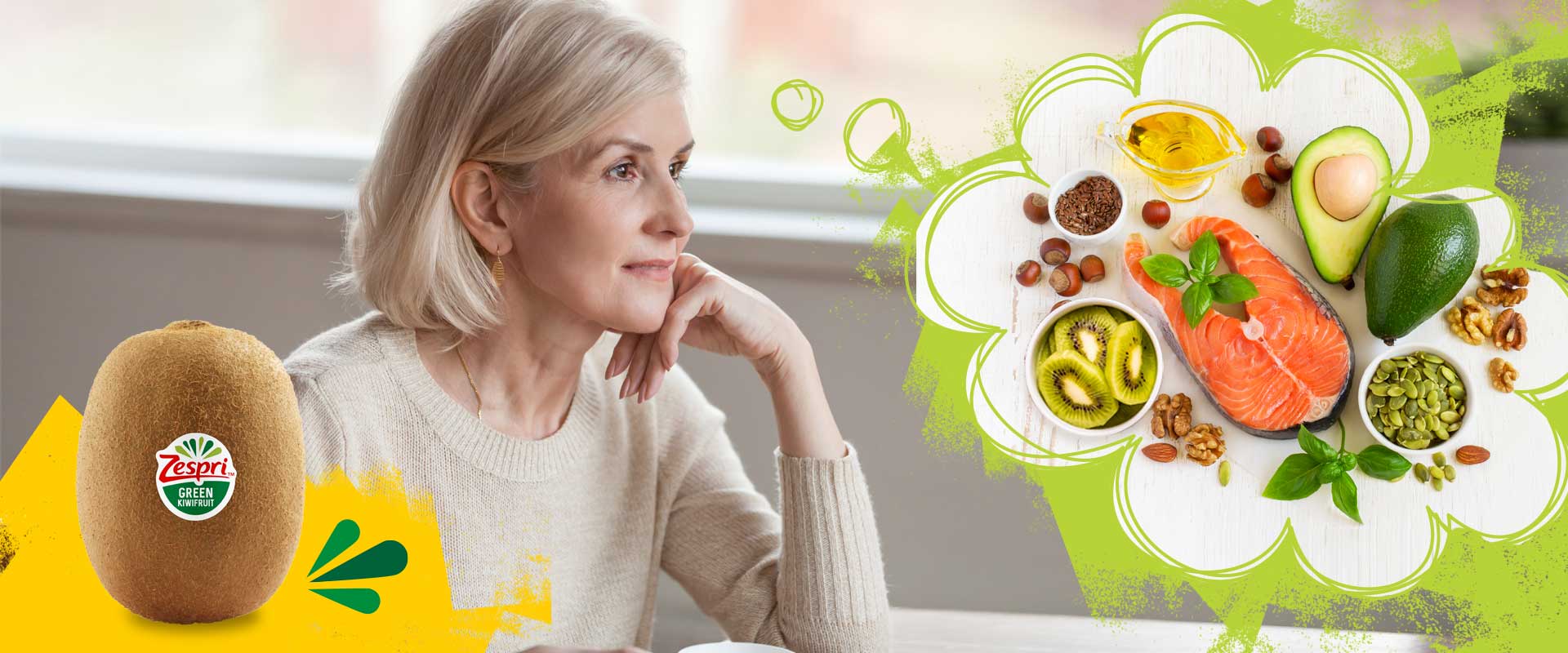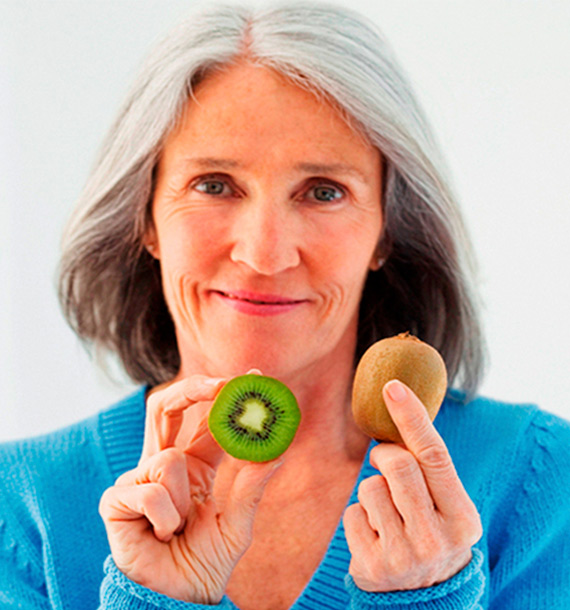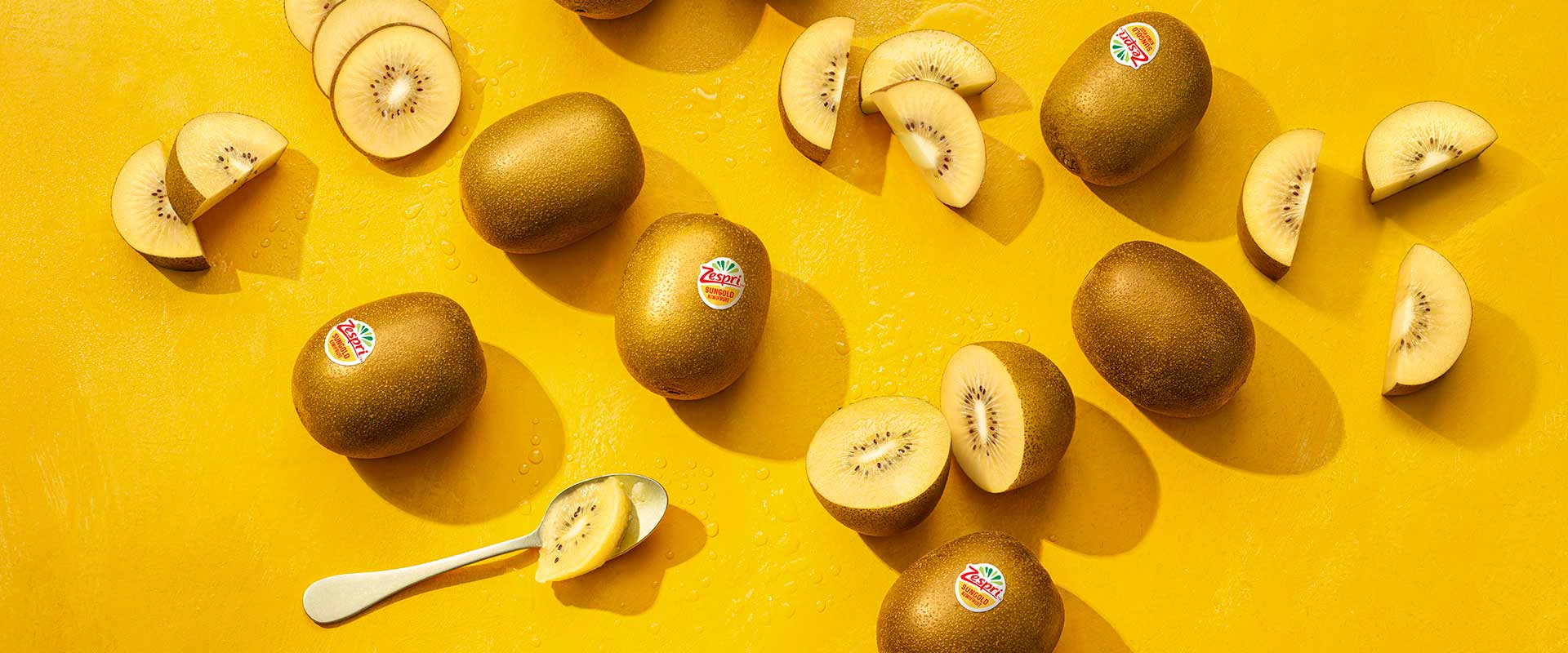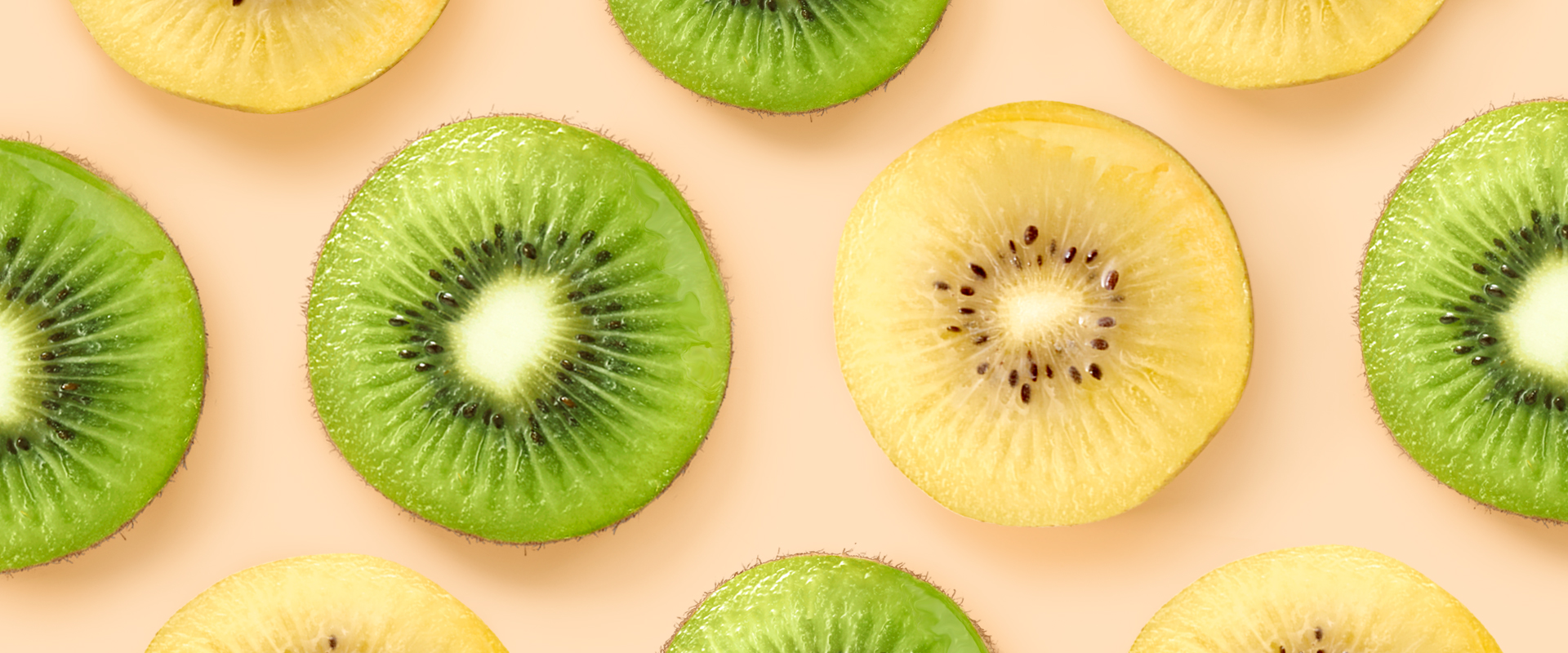Myth busting: Are all fats bad?
-
Zespri SunGold kiwifruit
-
Zespri Green kiwifruit
If you are trying to follow a healthy diet, fats might be high on your list of things to avoid. However, fat is a nutrient that we all need to eat, since it is a source of essential fatty acids1.
So how can you meet your recommended allowance of fats, whilst feeling fit and fresh? Keep reading for ways you can use Zespri™ Green kiwifruit to create balanced, varied dishes that will bust the myth that all fats are bad!
Why our body needs fats
Certain vitamins are ‘fat-soluble’, which means that the body can’t absorb them without the help of fats1. However, that doesn’t mean we need high levels of them in our diet. The key to staying healthy is to enjoy everything in moderation:
- If you feel like eating a food that is higher in fat, then keep an eye on your portions.
- Combine higher fat ingredients with plant-based foods such as Zespri™ Green kiwifruit, to create a balanced dish that is packed full of flavour.
- Sprinkle higher fat foods on a light soup or salad.
- Be mindful of each mouthful you eat, and you’ll be amazed by how far a small higher fat treat can go.
Why some fats are considered ‘healthier’ and why not all fats raise cholesterol
There are two main types of fat in foods: saturated fats and unsaturated fats. Both contain the same amount of energy (around 9kcal/g), but the unsaturated fats are considered to be “better” for us1:
Saturated fats:
- Can be found in many animal products, including meat and dairy.
- What people are referring to when they say that fat raises your ‘bad’ cholesterol.
Unsaturated fats:
- Usually found in the oils from plants and fish.
- Two types:
- ‘Monounsaturated fats’ are thought to lower ‘bad’ cholesterol and maintain ‘good’ cholesterol. They can be found in olive oil and nuts.
- ‘Polyunsaturated fats’, are also important for our health, as they contain omega-3 and omega-6 which can’t be made by the body.

Top Tips
- Stock your cupboards with ingredients such as olive oil, avocados, nuts and seeds.
- Introduce a couple of portions of oily fish (such as sardines or salmon) into your diet each week.
- Combine Zespri™ Green kiwifruit with a portion of oily fish to create a delicious breakfast. What about smoked salmon and kiwifruit on toast for example? There’s nobody who will accuse that dish of being “bad”!
- Follow a varied plant-based diet, full of fruits, vegetables, legumes and seeds. Zespri™ Green kiwifruit is a flexible ingredient that can easily be incorporated into this choice of lifestyle.
Why dishes with fats can be delicious and nutritious
What could be healthier than a fresh smoothie? These days, there are hundreds of variations available, from store bought options through to cafes dedicated to their creation. But the best smoothies are those that you make yourself! This way, you’ll have complete control over the ingredients you add, so you can make sure the smoothie is packed full of healthier fats.
Our favourite recipe at the moment is this one for an Avocado, Kale and Zespri™ Green Kiwifruit Smoothie. Did you spot the magic ingredient? Avocados of course! This ingredient is high in monounsaturated fats that can lower ‘bad’ cholesterol and maintain ‘good cholesterol’.
Time to get creative! There are countless versions of this smoothie that you can whip up in a flash. Want some more good news? Ongoing research suggests that eating kiwifruit could actually reduce and slow down the uptake of sugars from your food into the bloodstream. If this is the case, it could help reduce feelings of tiredness and hunger between meals, which often lead to unhealthy high-fat snacking. And that’s no myth!
Fantastic Kiwifruit Fact! 2,3
Zespri™ Green kiwifruit is a sweet indulgence that won’t tip the scales
It contains just 81 kcal per 100 g
References
- https://www.nhs.uk/live-well/eat-well/different-fats-nutrition/
- USDA national nutrient database for standard reference (release 28) 2015. Available from: https://ndb.nal.usda.gov/ndb/ (accessed 9 January 2017)
- New Zealand Ministry of Health. New Zealand FOODfiles 2014 Version 01. Available from: www.foodcomposition.co.nz/ (accessed 10 January 2017)






